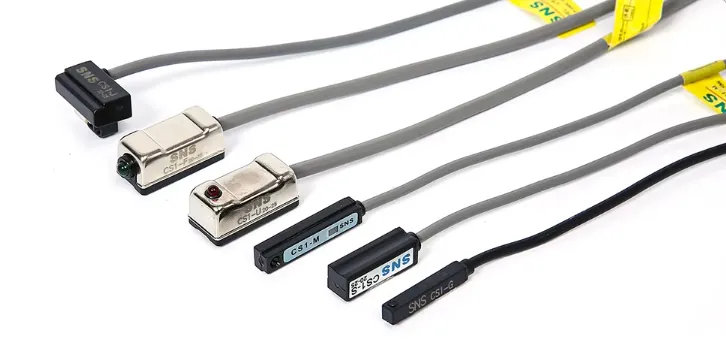How Do Reed Switches Work
Have you ever wondered how those tiny switches inside your devices work? Reed switches are the answer!
These small, simple, and reliable switches use a pair of ferromagnetic contacts sealed inside a glass tube. When a magnetic field is applied, the contacts snap together, completing the circuit.
What Is Reed Switch and How Does It work
A reed switch consists of two ferromagnetic contacts sealed inside a glass tube filled with inert gas. When a magnetic field is applied, the contacts become magnetized and attract each other, closing the switch and allowing current to flow.
The switch remains closed as long as the magnetic field is present. Once the magnetic field is removed, the contacts demagnetize and spring back to their original open position, breaking the circuit.
Advantages of Reed Switches
- Reliability and Longevity: Reed switches are highly reliable and have a long life expectancy, ideal for frequent switching applications.
- Sensitivity: They can be activated by weak magnetic fields, allowing use in diverse applications.
- Shock and Vibration Resistance: Reed switches are immune to shock and vibration, suitable for harsh environments.
- Size and Cost: Their small size and low cost make them attractive for compact and cost-sensitive applications.
- Fast Response Time: They have a fast response time and can switch at high speeds, suitable for high-speed applications.
- Environmental Protection: Reed switches are hermetically sealed in a glass envelope, protecting them from dust, moisture, and other environmental factors.

Reed Switch Symbol
The symbol for a reed switch typically consists of two parallel lines representing the electrical contacts, with a diagonal arrow pointing towards them to indicate the presence of a permanent magnet.
The parallel lines symbolize the switch contacts, while the arrow denotes the magnetic field that activates the switch when a magnet is brought close to the glass envelope.
Types of Reed Switches
Form A: Single Pull Single Throw (SPST), Normally Open (NO)
Form A reed switches, also known as SPST-NO, are the most common type. They feature two contacts that remain open until a magnetic field is applied, causing them to close and complete the circuit.
Form B: SPST, Normally Closed (NC)
Form B reed switches, or SPST-NC, operate in the opposite manner to Form A switches. Their contacts remain closed until a magnetic field is introduced, causing them to open and break the circuit.
Form C: Single Pull Double Throw (SPDT), NO/NC
Form C reed switches, or SPDT, combine the functionality of Form A and Form B switches. They feature three contacts, with one common contact that switches between a normally open and normally closed contact when a magnetic field is applied.
Factors Affecting Reed Switch Selection
Sensitivity and Magnetic Field Strength
The sensitivity and required magnetic field strength are crucial factors when selecting a reed switch. These parameters determine the switch’s activation and deactivation points.
Switching Characteristics
Consider the switching voltage, current, and power ratings of the reed switch. Operating time and bounce time also impact the switch’s performance in specific applications.
Physical Dimensions and Materials
The dimensions of the reed switch must fit the intended application. Contact materials, such as rhodium or ruthenium, affect the switch’s durability and reliability.
Switch Configuration
Choose between normally open, normally closed, or change-over configurations based on the circuit requirements. This decision impacts the switch’s behavior in the absence of a magnetic field.
Environmental Factors
Evaluate the environmental factors, such as temperature and vibration, that the reed switch will be exposed to. Ensure the selected switch can withstand these conditions without compromising performance.
Applications of Reed Switch
- Burglar alarms, door and window sensors: Used in security systems to detect unauthorized entry or tampering.
- Automotive sensors: Employed in speed sensors, fluid level sensors to monitor and control vehicle functions.
- Medical devices: Vital in pacemakers and defibrillators for reliability and precision.
- Reed relays: Used in telecommunications and electronic circuits.
- Float switches: For liquid level detection in tanks and reservoirs.
- Hazardous environments and aerospace: Compact size and hermetic sealing make them suitable.

FAQs
What is the typical lifespan of a reed switch?
The lifespan of a reed switch depends on factors such as the application, load, and environment, but they can typically last millions to billions of switching cycles.
In Conclusion
In conclusion, reed switches are simple yet versatile devices with numerous applications in various industries. Their ability to detect magnetic fields and control electrical circuits makes them essential components in many modern systems.
To learn more about reed switches and their potential uses, consult with a qualified electrical engineer or supplier.

